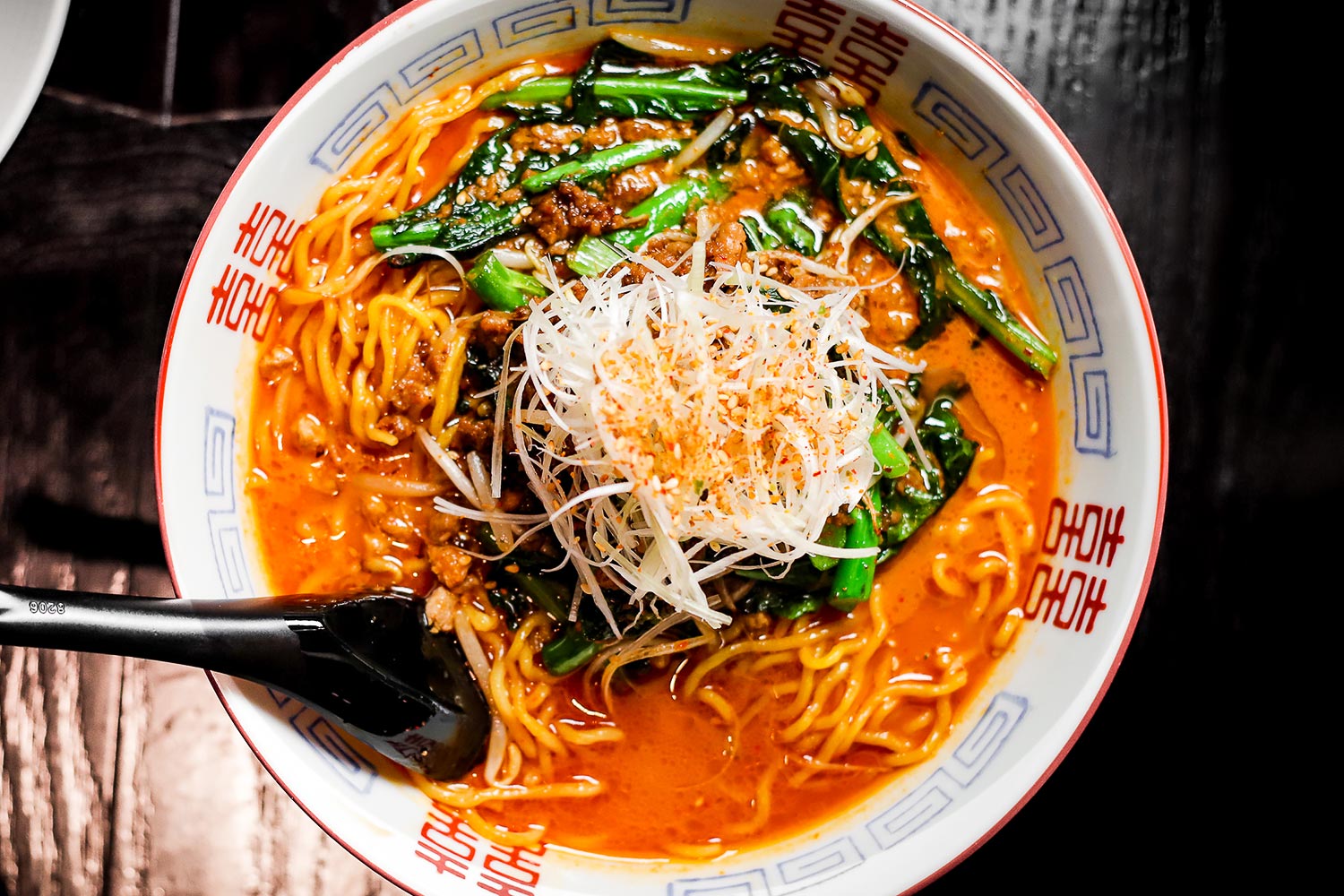I’ve rarely seen a moment of collective culinary sadness quite like the day Sumi Robata Bar announced it was closing. The tiny restaurant specializing in exquisite Japanese grilling had received unanimously rave reviews, as well as a Jean Banchet award and a Michelin Bib Gourmand.
Sumi was the passion project of chef Gene Kato, who had done his time running the huge kitchen at posh Japonais and was trying out a place of his own. Sumi closed in August of 2017, but now, Kato is back — and more ambitious than ever — as the new chef at Momotaro. Plus, some of his Sumi favorites are back on the menu.
It’s a little tough for Kato to talk about Sumi (he describes running his own shop as “the ultimate test for a chef”), but moving to a bigger restaurant within the Boka Restaurant Group had its perks. “For five years, I was working seven days a week, sixteen hours a day,” says Kato. Now that he's in charge of Momotaro’s much larger kitchen, which serves 300 to 400 people a night, Kato has a support staff. This gives him both more time to be creative and the opportunity to sleep and see his family.
When Sumi closed, Kato moved to Charlotte, North Carolina, and cooked there for a while. But as soon as he had a chance to move back, he packed his things.
Momotaro was the perfect match. “It was a bolt of lightning. It’s a high-volume restaurant, which I’ve had experience with at Japonais, but it also focuses a lot on tradition, which obviously Sumi was all about.” Kato has been working in the kitchen since December, but waited until the new year to start making menu changes.
Still, Kato isn’t trying to recreate the past. “This isn’t Sumi under the Momotaro roof.” Plenty of Kato’s most exciting new dishes would never have been available at Sumi — say, the jidori kimo, a chicken liver pâté inspired by ankimo, Japanese monkfish liver. The liver is first steamed to make a light, velvety spread, and served with a soba milk bread, persimmons, hot mustard, and pickled watermelon radish.
If you want a showstopper to match Momotaro’s giant, glam dining room, order the yakiniku, a take on Korean barbeque. When it’s served, premium A5 wagyu from Japan, American wagyu, and wagyu beef tongue come out of the kitchen on a miniature grill with binchotan (Japanese charcoal). Guests cook the meat themselves before topping it with fresh wasabi and fried garlic. “The aromas go through the entire dining room,” says Kato. “It’s kind of like the old fajita sizzle platter.”
Unsurprisingly, the robata selections at Momataro have expanded. And on the restaurant's large two-chef grill, Kato can perpare dishes he couldn’t manage on his own at Sumi. An entire half quail is grilled on the robata and served with a poached quail egg and a roasted bone sauce. Awabi (abalone) has a bit of a harder texture when served raw, but when grilled on the hot robata, “it gets the smoke flavor and has a texture somewhere between squid and octopus,” Kato says.
If you’ve never ventured downstairs at Momotaro, do: There’s an entire second restaurant down there, the Izakaya at Momotaro. The darker, casual space evokes Tokyo pub dining, and Kato has done a complete menu overhaul. Dishes like uni deviled eggs, jidori karaage (Japanese fried chicken), and the chefs award-winning ramen are on offer, as is omurice, a creamy egg dish atop wagyu fried rice currently making the rounds in Facebook food videos.
The expansion of the Izakaya menu means that more diners can have a Momotaro experience without booking weeks in advance (or spending a bundle). “If you want a great sushi experience, you can have that. You can have robata, you can go down to the Izakaya and drink Japanese whiskey,” says Kato. “It’s four to five experiences within one restaurant. That’s what makes Momotaro so special.”



